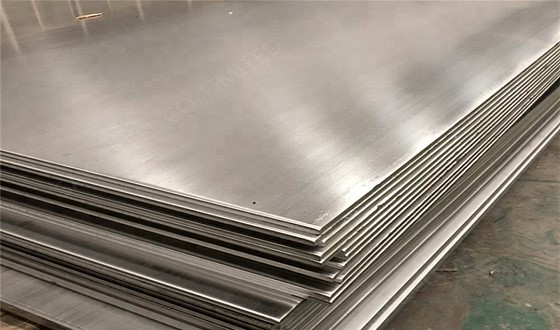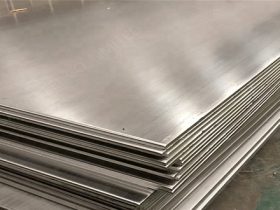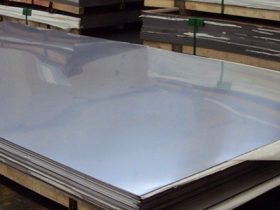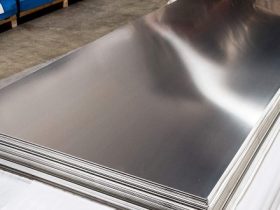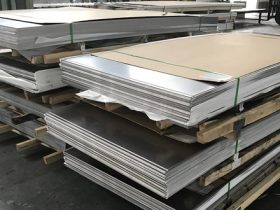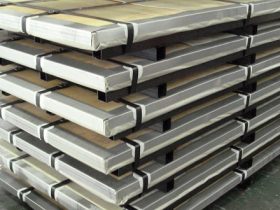Grade: 316 (ASTM A240/EN 10088)
Thickness: Hot Rolled: 2.5mm-200mm; Cold Rolled: 0.3mm – 6mm
Width: Cold Rolled: 10mm-2000mm; Hot Rolled: 1000mm-3500mm
Length: 1000-6000mm (Customized sizes are accepted)
Size: 1000*2000mm, 1219*2438mm, 1500*3000mm, or as required
Surface Finish: 2B, NO.1, HL, NO.4, 4K, 8K, Sandblast, BA, Checker Plate
Packing: Clients’ requirement and Standard export sea-worthy packing
| Parameter | Details |
|---|---|
| Material Grade | 316 (ASTM A240/EN 10088) |
| Thickness Range | Hot Rolled: 2.5mm-200mm; Cold Rolled: 0.3mm – 6mm |
| Width Range | Cold Rolled: 10mm-2000mm; Hot Rolled: 1000mm-3500mm |
| Surface Finish | 2B, NO.1, HL, NO.4, 4K, 8K, Sandblast, BA, Checker Plate |
| Tensile Strength | ≥ 515 MPa (min) |
| Elongation | ≥40% |
| Yield Strength | ≥ 205 MPa (min) |
| Chemical Composition | Chromium (Cr): 16.0% – 18.5%; Nickel (Ni): 10.0% – 14.0%; Molybdenum (Mo): 2.0% – 3.0%; Iron (Fe): Balance; |
What is 316 / 316L Stainless Steel Sheet?
316 and 316L stainless steel sheets are flat-rolled products made from grade 316 stainless steel, available in specified lengths, widths, and thicknesses. These sheets offer excellent flexibility and exceptional corrosion resistance, making them ideal for use in harsh environments—especially in acidic, chemical, or marine conditions.
Why Choose 316 / 316L Stainless Steel Sheet?
Standard 316/316L stainless steel sheets provide outstanding corrosion resistance, even at elevated temperatures, while offering enhanced strength compared to other stainless steel grades. The presence of molybdenum in 316-grade steel enhances its chemical properties beyond those of 304, making it suitable for more aggressive corrosive environments.
316 stainless steel sheets also possess superior heat resistance, making them ideal for applications such as marine components, chemical processing equipment, and structural elements in coastal or offshore construction where exposure to pressure and heavy loads is common.
With excellent weldability and formability, 316/316L stainless steel is a reliable material for demanding projects. Choosing this material ensures high performance and long-term durability. Partner with OrinoxSteel to bring added value to your industrial or construction projects.
Common Types of 316 Stainless Steel Sheet
316 stainless steel sheets are commonly available in four types:
-
316
-
316L (Low Carbon)
-
316H (High Carbon for high-temperature strength)
-
316Ti (Titanium-stabilized for better weld performance)
Each type offers unique advantages depending on the composition and application needs.
316 Stainless Steel Sheet Specifications
Pre-cut 316 stainless steel sheets are a convenient and efficient solution for quickly sourcing materials for your project needs. For large or custom industrial applications, the availability of multiple specifications helps streamline decision-making and improves overall project efficiency.
Available Thicknesses of 316 Stainless Steel Sheet:
-
0.8 mm
-
1.0 mm
-
1.5 mm
-
2.0 mm
-
3.0 mm
-
5.0 mm
-
10.0 mm
Standard Sheet Dimensions:
-
1000 x 1200 mm
-
1219 x 2438 mm
-
1220 x 1000 mm
-
1250 x 2500 mm
-
1500 x 1000 mm
-
1500 x 3000 mm
-
1524 x 6000 mm
How to Calculate the Weight of 316 Stainless Steel Sheet
The weight of a 316 stainless steel sheet varies depending on its dimensions. Use the following formula to calculate the weight:
Weight = T × W × L × 7.98
Where:
-
T = Thickness (mm)
-
W = Width (mm)
-
L = Length (mm)
-
7.98 is the density of 316 stainless steel (7.98 g/cm³)
Custom Cut-to-Size Service
In addition to standard sheet sizes, we offer precision cutting services based on your required dimensions. Simply share your custom specifications with us, and our engineering team will ensure accurate and timely delivery to meet your exact needs.
Industrial Applications
-
Ideal for manufacturing marine components such as ship fittings and anchors.
-
Used as raw material for producing piping parts and industrial accessories.
-
Applied in the fabrication of wastewater pipelines, drainage channels, and industrial valves.
-
Commonly used in the food processing and transportation industries for equipment production.
Construction & Civil Applications
-
Suitable for both interior and exterior architectural decorations.
-
A reliable material for outdoor structures and environments exposed to extreme temperatures.
-
Used in the production of kitchen utensils such as pots, pans, chopsticks, and spoons.
-
Widely applied in the manufacturing of water tanks and chemical storage containers.
| Comparison Items | 200 Series (201) | 300 Series (304 as a representative) | 400 Series (430 as a representative) |
|---|---|---|---|
| Chemical Composition | Chromium (Cr) 16% – 18%, manganese (Mn) 5.5% – 7.5%, nickel (Ni) 3.5% – 5.5%, nitrogen (N) ≤0.25% | Chromium (Cr) 18% – 20%, nickel (Ni) 8% – 10.5%, low carbon | Chromium (Cr) 16% – 18%, low carbon, ferrite structure |
| Tensile Strength (MPa) | ≥520 | ≥515 | ≥450 |
| Elongation (%) | ≥40 | ≥40 | ≥22 |
| Corrosion Resistance | Moderate corrosion resistance, suitable for less corrosive environments. Prone to rusting in humid or corrosive conditions compared to 300 series. | Good general corrosion resistance, suitable for general atmosphere, fresh water and other environments, relatively weak tolerance to chloride ions | Fair corrosion resistance, better than carbon steel but inferior to 300 series. Susceptible to pitting corrosion in chloride-rich environments. |
| Magnetic Properties | Weakly magnetic due to its alloy composition | Non-magnetic in the annealed state, may become slightly magnetic under certain processing conditions | Magnetic |
| Cost | Relatively low, due to lower nickel content and relatively simple composition | Moderate, as a widely used and reliable grade | Relatively low, similar to 200 series in terms of cost, but with different performance characteristics |
| Application Fields | Interior decoration, low-end kitchenware, some decorative trims in buildings where corrosion resistance requirements are not high | Kitchen utensils, building decoration, general industrial components and other daily fields | Appliance housings, automotive trim, some food processing equipment where non-magnetic properties are not required and moderate corrosion resistance suffices |


